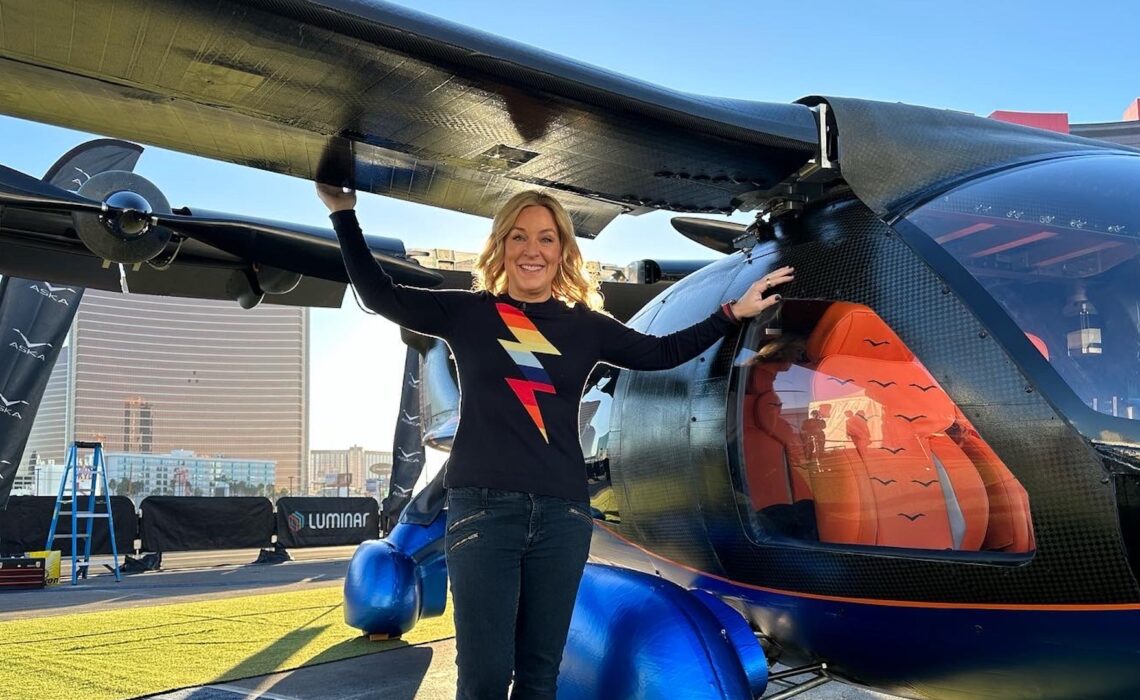
From flying cars to laptops that fold like origami, gadget makers large and small unveiled all kinds of buzzy, Jetson-esque, and just plain strange tech over this past week at CES 2023.
Will you actually buy any of it in the days and weeks to come? Absolutely. Some of the most headline-grabbing products are already available and selling like crazy.
Examples include Bird Buddy — that connected feeder that streams photos and videos back to an app on your smartphone — and the minuscule KardiaMobile Card that gives you medical grade EKG readings from a credit-card gadget that tucks in your wallet. (More about both below.)
But the real value of the world’s most influential tech show is that it lays the vision for where our lives are headed in the months, weeks, and years to come.
Here are several gadgets you’ll want to know about, including that flying car that’s coming to the skies and streets much sooner than you might think. Take a look.
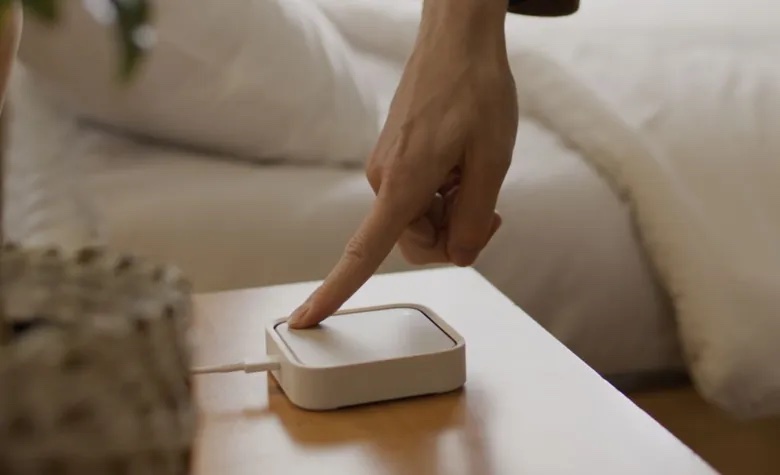
Palm-sized puck becomes remote control for your (home)life
CES 2023 will go down as the year a new generation of smart home gadgets led the masses into the next phase of home automation.
In other words, connected, sensor-laden, and much more “teched-out” houses are about to shift from “early-adopter” to the norm, and Samsung’s SmartThings Station is at the forefront of this major evolution.
It’s like a new remote control for where you live, interconnecting and managing smart home devices through the touch of a button. You can use it to control TVs, speakers, thermostats, all of it — regardless of what company makes the device. This is huge. Thanks to a new industry standard called Matter, everything finally plays nicely together in the sandbox. The new hub even doubles as a wireless charger for smartphones and earbuds. It comes out next month for $60.
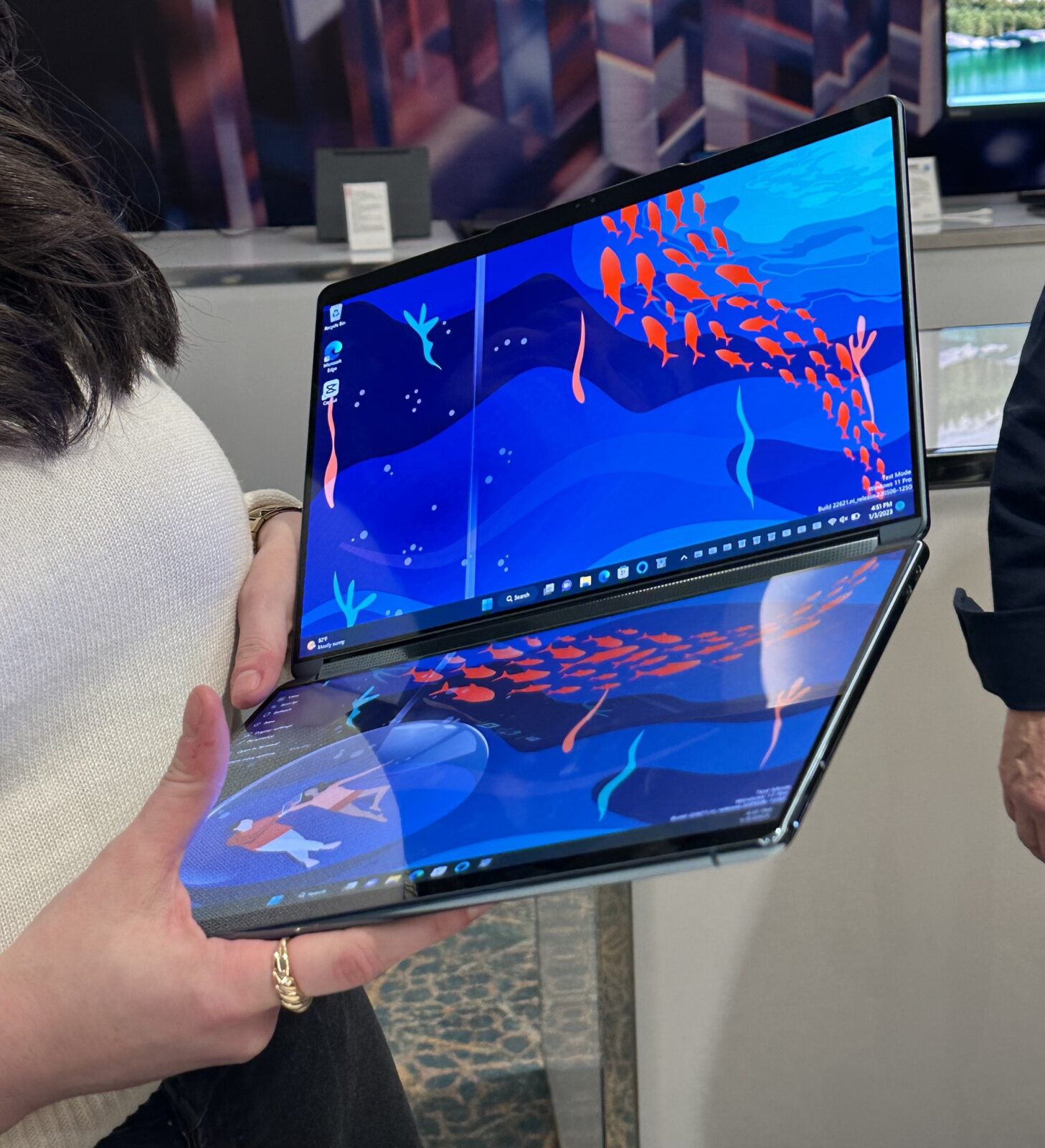
Fantastical future of dual-screen laptops
Behold the fantastical future of laptops that don’t suck. Lenovo just unveiled its Yoga Book 9i, the boldest, most beautiful, by far the best attempt by any company to date — to make a dual touchscreen notebook work in the real world.
It features two full-size OLED displays that you can use in portrait or landscape mode, with different content on each screen, or as one seamless waterfall-like flowing image. You can also use it with its partial touchscreen keyboard or the detachable physical keyboard that’s included. Also included? The absolute stunner of an origami-like, flipping, folding, morphing kickstand.
I’ve been doing first-looks with Lenovo for the past decade, and this laptop is one of the top pieces of hardware I’ve ever seen from the world’s most prolific PC maker. We’ve been hoping a company would get dual screens “right,” and it appears this one finally did.
The company said this new notebook will cost $2,000 when it comes out in April.
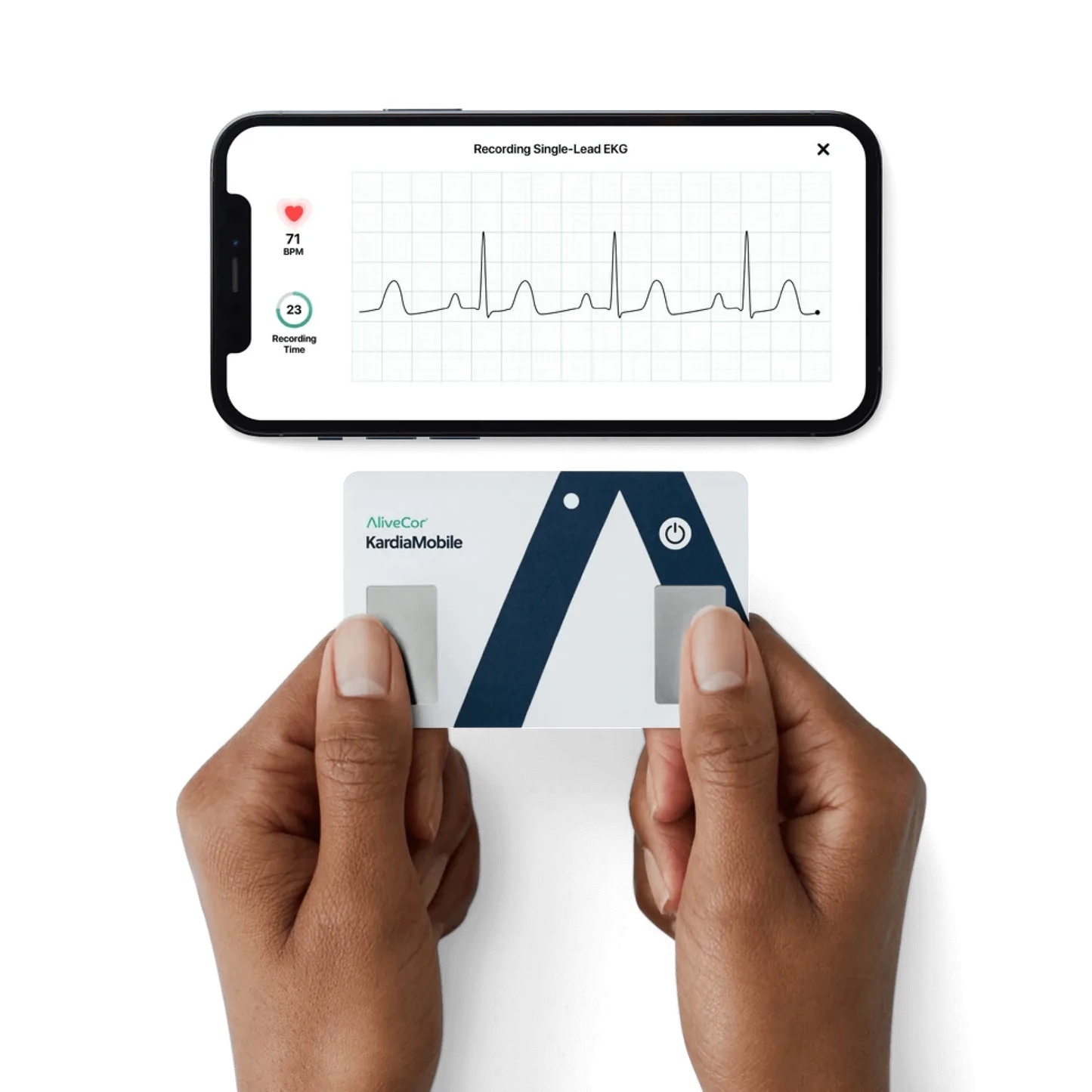
Connected credit card for your heart
There are loads of headline-grabbing gadgets at every CES, but the ones I tend to think about long after the show wraps up have the potential to change lives in profound ways.
That’s the case with the KardiaMobile Card. It’s the first-ever credit-card-sized personal EKG cleared by the FDA to find out if your heart rate is normal in just 30 seconds.
It connects to an app on your smartphone via Bluetooth. Put your thumbs or index fingers on the little electrode pads to record that medical-grade EKG in less time than it often takes me to tell you about it. It can detect up to six of the most common heart arrhythmias, or irregular heartbeats.
I have an arrhythmia and have this exact card tucked away in my wallet. It’s been incredible to get this kind of information in real-time and be able to share it with my doctor with one quick tap. It’s available now for just under $100.
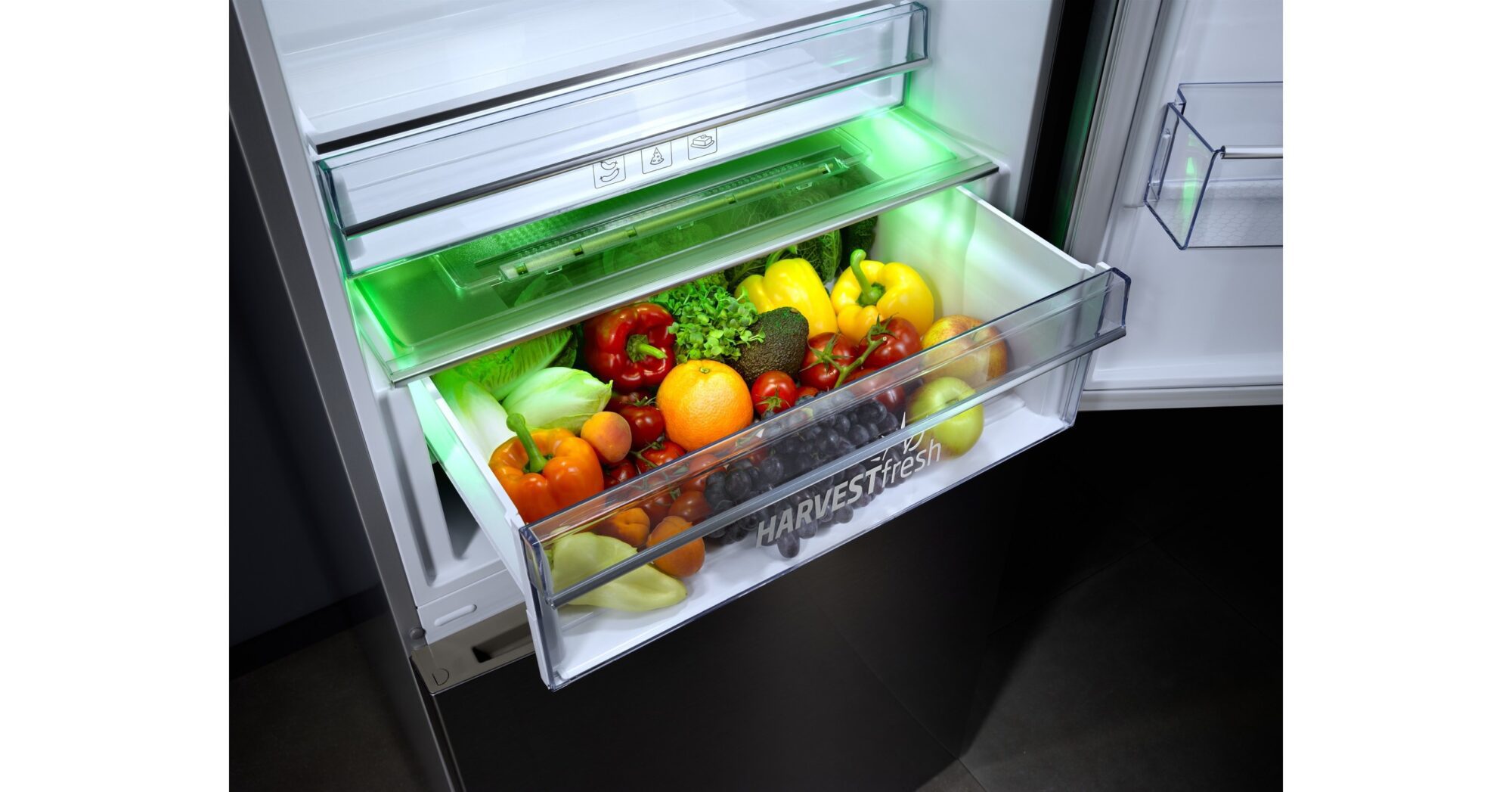
Beko HarvestFresh technology
New fridge aims to solve a billion-dollar dilemma
“Smart” refrigerators have become a staple of CES showroom real estate here over the past several years. But will you really spend a small fortune for one that changes colors based on your mood? If you’re wealthy, sure, why not. But my money’s on a model that can pay for itself in a year of use. Read on.
The Beko Refrigerator promises to keep veggies fresh for 30 days and extend the essential vitamin content in the vegetable itself. It uses new tech the company calls HarvestFresh, which is a three-color light technology tucked into the crisper drawer that glows blue in the morning, green at noon, and red at night to mimic the 24-hour sun cycle.
This is incredibly relevant. Statistics show Americans waste more than $218 billion each year on food, with a family of four tossing out $1,600 a year in produce alone.
HarvestFresh comes out in 20 various Beko Fridge models in April. The cost starts at $1,300.
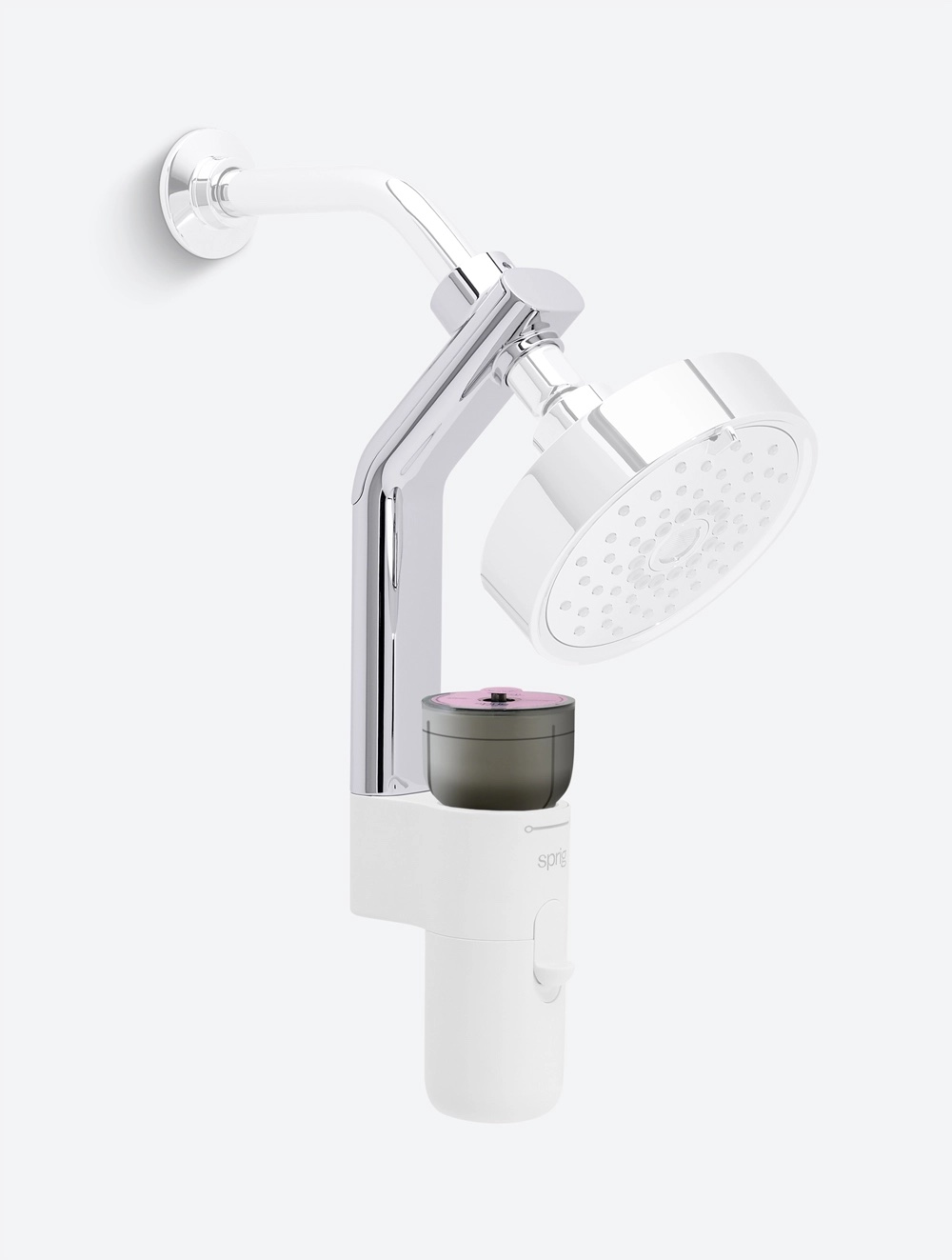
The Keurig of … showers?
Kohler’s making quite a splash with its’ Sprig Shower Infusion System that retrofits your shower with spa-like magic. The new gadget connects to your showerhead to let you add aromatherapy pods with scents like eucalyptus, chamomile, lavender, and other skincare ingredients such as hyaluronic acid and sodium. These are the same kind of skin-pampering goodies you find at luxury spas.
Kohler said they hope the new Sprig wellness system turns daily routines into self-care rituals. Yes, please. The shower-infusion gadget comes out this Spring for $140. The recyclable shower infusion pods will come in trial packs of six sample-size pods for $21 and individual multi-use pods for $24.
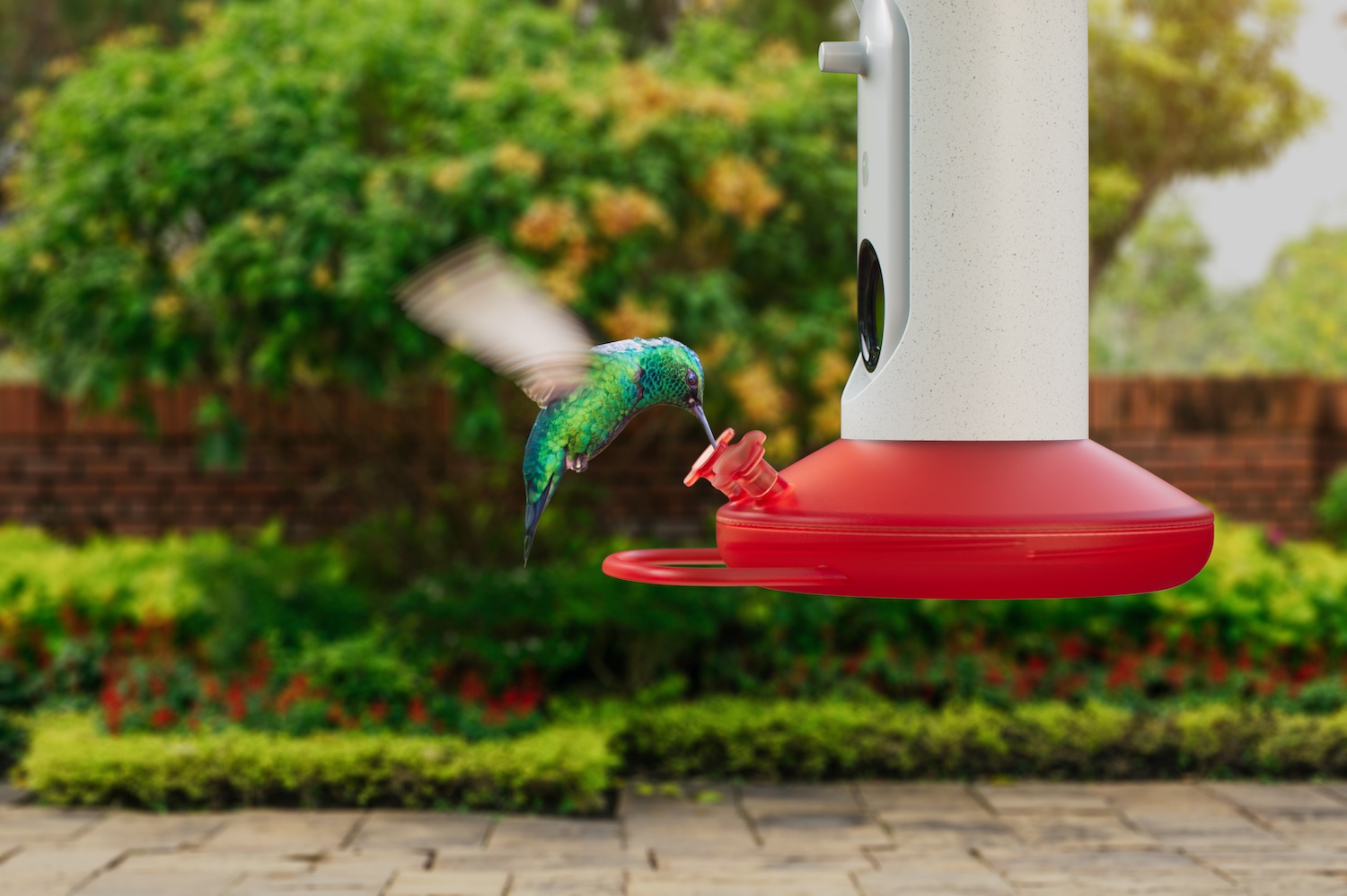
Connected bird feeder gives a new meaning to the term “tweeting”
Oh, my fellow bird nerds rejoice. There’s a new Bird Buddy AI-powered Hummingbird feeder coming soon to a backyard near you.
The company showed off the prototype at CES alongside its already wildly popular, viral-sensation original smart feeder that launched last year. Both the new and earlier models are equipped with a high-speed camera to capture photos and videos of all the high-flying fun.
In the original, motion triggers AI to identify around 1,000 birds. The new hummingbird model will recognize up to 330 species of these little magical marvels and capture all frame after frame of their aerial acrobatics.
Both feeders connect to the companion app on your smartphone and give you the option to add photos and videos to your in-app collection or share them with the wider Bird Buddy online community. It can now even send you a notification when a new feathered friend shows up.
The original is out now and costs $200. The new hummingbird model is expected later this year — price TBA.
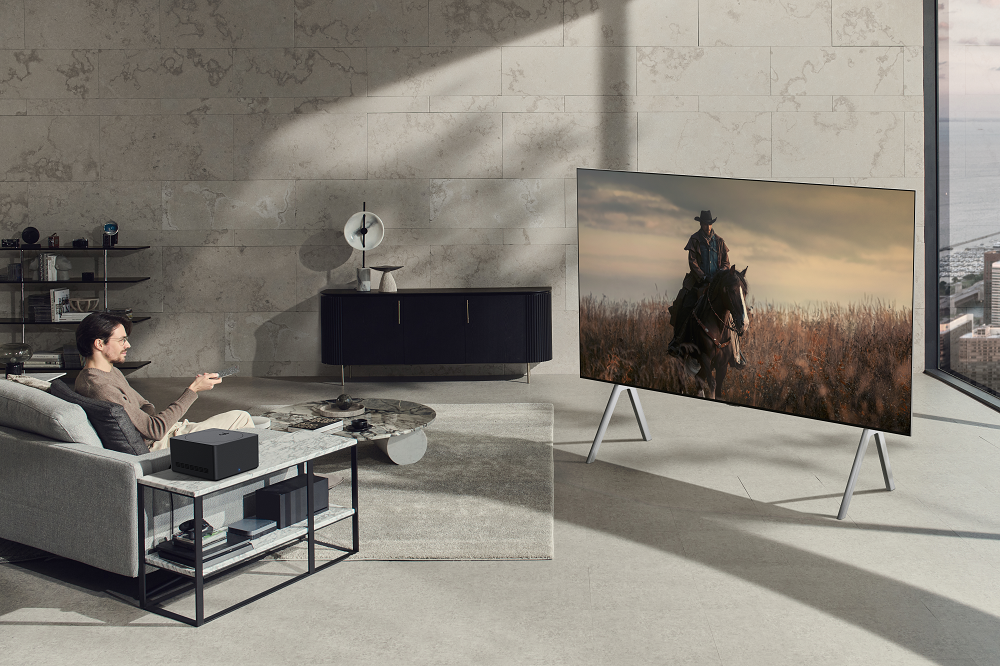
Cord-Cutters Ultimate Dream TV
LG’s 97-inch LG SIGNATURE OLED M (model M3) totally steals the screen spotlight — as much for what’s on it — as for what’s not.
The flawless, stunning, eye-popping images we’ve come to expect from LG get beamed to the TV from the world’s first 4K 120Hz box LG calls “Zero-Connect.” That means there are no messy wires or cables. You can put the Zero-Connect box on a bookshelf or end table — up to 30 feet away from the screen, according to the company, and let it better blend in with your home décor. For the first time, maybe ever, your TV can turn into a piece of art when you’re not binge-watching White Lotus.
LG says it’s coming sometime in 2023 — no word yet on pricing — and it will also come in 77 and 83-inch sizes.
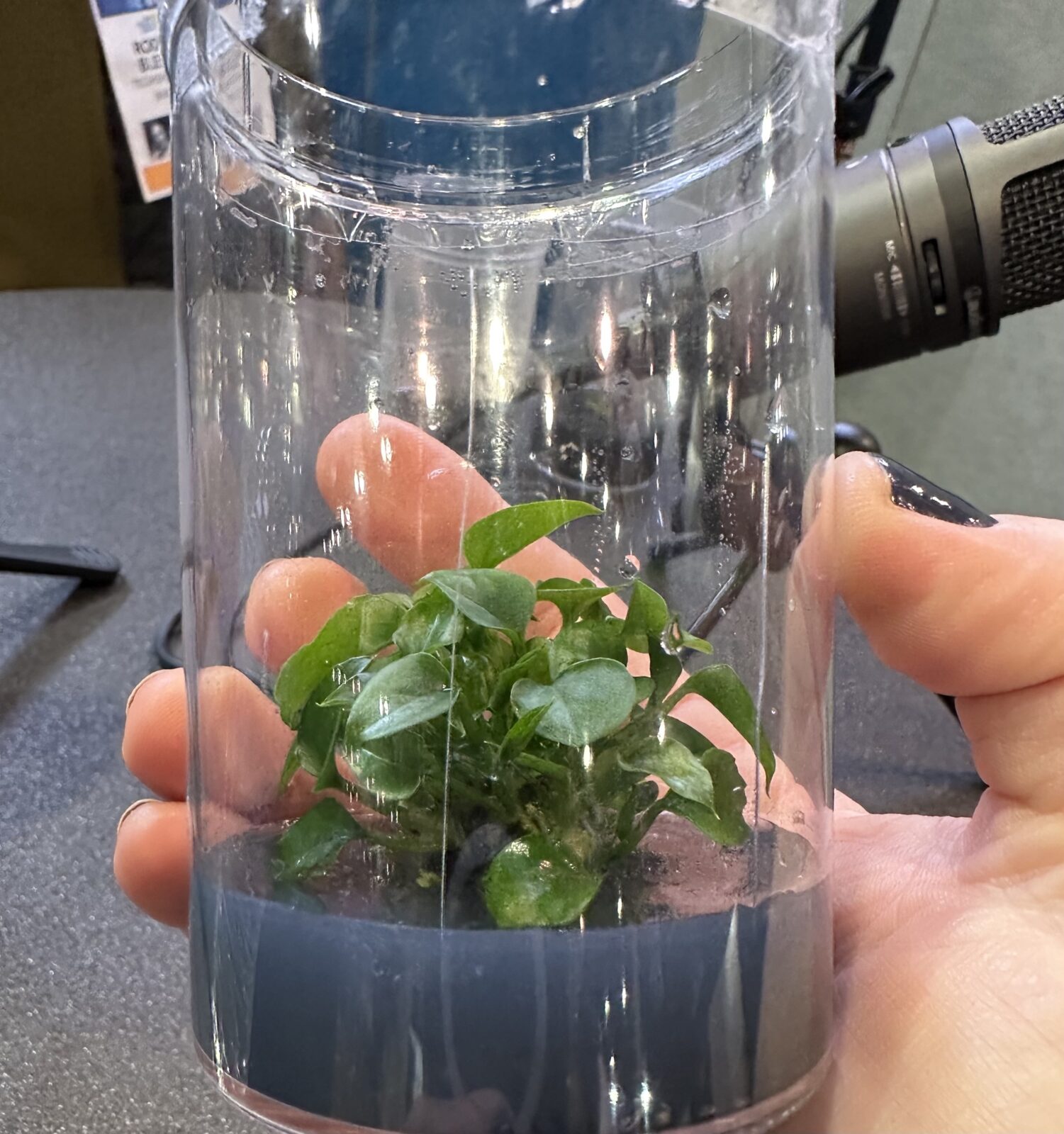
Air-Scrubbing Houseplants
A budding startup out of France called Neoplants showed us a palm-sized baby houseplant bioengineered to capture and contain the most dangerous indoor air pollutants in our homes. They’re calling it the Neo P1.
“We’re working on the first generation of plants that can fight chemicals commonly found where we live,” Neoplant CEO Lionel Mora told me. “This includes formaldehyde, benzene, toluene, and xylene, VOCs that household cleaning products, paint, and a lot of other things constantly put in our air.”
“It has pieces of DNA inside of them … that are able to use these pollutants as a carbon source,” added Patrick Torbey, Neoplant CTO. “So it’s a normal plant that adds these functions, these characteristics that totally clean the air.
The plants will go on presale in Q1 of 2023 for $180, and the company plans to start shipping them in November.
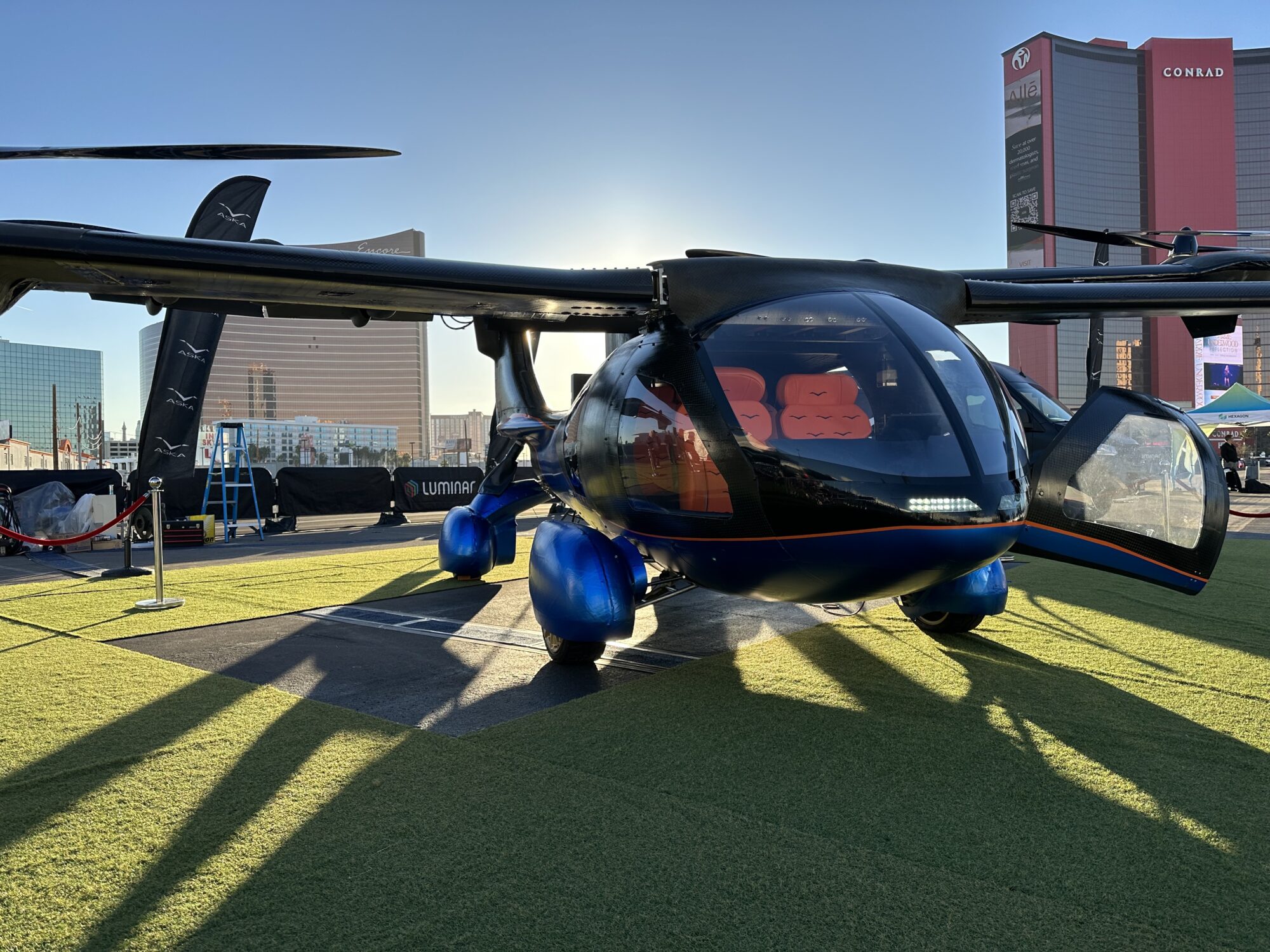
Great Scott! Flying cars are taking off (well, sort of).
Here’s the one we’ve all been waiting for. Aska’s A5 flying car prototype brings our Jetson-Esque dreams of cars with wings — or is it a plane with wheels? — the closest we’ve ever seen to a reality.
The body of this fully functional prototype fits into a large SUV parking spot when the wings are folded down. Wings up, it definitely won’t fit in a normal garage, but man, will it ever make your neighbors jealous.
The cockpit, or cabin, feels like a helicopter, with two seats in front and two behind and a yolk where the steering wheel should be. Electric batteries backed with a small gas engine power the contraption. The company says the A5 can take off and land vertically with a flight range of up to 250 miles and flight speeds of 150 mph. Its target is to get highway certification with a speed of 70 mph while in drive mode.
No longer just a flight of fancy, Aska’s CEO told us the first models, likely taxis, are expected to hit the roads or skies in just three years. They’re already taking preorders, and one person bought one on the spot within hours of CES’s opening day. The cost? A whopping $789,000. You can put one on hold now with a $5,000 deposit. No surprise, the person who had just thrown down cash for one happens to work at one of the biggest tech companies in the world with a name that may or may not resemble a popular fruit.
Keep coming back to Techish.com and follow our social channels for the very latest from CES2023!
